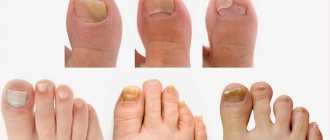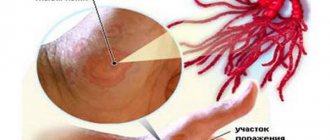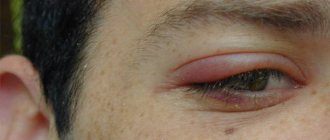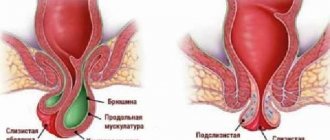Yesterday there were no signs of trouble, but today he appeared. Who or what? Barley is a disease that most people do not attach much importance to. And in vain. This pustule, which can “jump up” both on the lower and upper eyelids, is a kind of indicator: the immune system is weakened. “Folk sages” can recommend many ways to get rid of barley, and some of them are associated with increased health risks. Therefore, it is better to go to the doctor, and those who do not want or cannot visit a specialist should refuse to use “suspicious” methods.
What is barley and its types
Hordeolum (gordeolum) , and in common people “barley” is an acute, purulent inflammatory disease localized in the hair follicle. Most often, people are affected by external stye , which looks like a purulent abscess located on the edge of the upper or lower eyelid. It is noteworthy that in this case the victim of inflammation is the Zeiss sebaceous gland. Hordeolum is a non-contagious disease, so do not panic when you see a person with such a “decoration” on the eye.
Internal barley is a more complex and dangerous pathology that appears due to purulent inflammation of the meibomian gland lobule. Very often, this disease is confused with chalazion, which is often called “cold” stye. If a chalazion appears, then you should not expect it to go away on its own or “dissolve”, because this disease is chronic and getting rid of it requires the intervention of competent specialists.
Factors in the formation of barley and consequences
Inflammation of the eyelid can develop for the following reasons:
- lack of vitamins and fresh air;
- diabetes;
- decreased immunity;
- failure to comply with hygiene rules;
- demodex mite;
- using someone else's cosmetics;
- chronic gastrointestinal diseases.
Failure to see a doctor in a timely manner can lead to unpleasant consequences from inflammation of the eyelid. Improper treatment of barley provokes blood infection and the development of unpleasant diseases such as meningitis or sepsis.
Attention! In many cases, stye on the upper eyelid is caused by Staphylococcus aureus, which penetrates the gland through the hair follicles and leads to the appearance of purulent discharge on the eyelid.
Causes of barley
- Avitaminosis. A lack of vitamins A, B and C can provoke an inflammatory process. At risk are smokers (nicotine destroys ascorbic acid), people who rarely spend time in the fresh air, and those who have not been able to properly plan their diet.
- Weakened immunity. When a person often catches colds, works a lot physically, goes on diets, and is in a constant state of stress, then his immune system cannot cope with such stress and can react by the appearance of stye on the eye.
- The presence of inflammatory and infectious diseases. This could be caries, tonsillitis, rhinitis, sore throat.
- Hypothermia. Sometimes it is enough to get caught in the rain, walk down the street in a snowstorm or frost, or dress inappropriately for the weather, in order to receive a “reward” of acute respiratory infections with barley to boot.
- Failure to comply with personal hygiene rules. It is enough to simply rub your eye with a dirty hand or insert a contact lens into it, so that the next day the stye will “jump up.”
- Using low-quality cosmetics. You should be careful when choosing decorative cosmetics, which, at best, can provoke an allergic reaction.
- The presence of certain diseases. This could be diabetes mellitus, gastrointestinal diseases, helminthiasis, seborrhea, blepharitis (an ophthalmological disease, the lack of treatment of which can cause complete loss of eyelashes). Carriers of Staphylococcus aureus also run the risk of becoming a victim of hordeolum, but the most unpleasant thing is that Staphylococcus aureus is resistant to antibiotics.
Prevention
To prevent the development of barley, you need to follow simple preventive rules:
- Strengthen the body's defenses.
- Eat healthy and wholesome food.
- Observe hygiene rules.
- Remove all dirt from the eyelid skin using regular baby soap or special hygiene products.
- Do not rub your eyelid when dust enters it and do not touch it with dirty hands.
- You only need to use personal cosmetics.
How to choose colored lenses
The disadvantages of wearing contact lenses are described in this article.
Colored toric lenses https://eyesdocs.ru/linzy/toricheskie/cvetnye-linzy-pravila-podbora-i-uxoda.html
Symptoms
In the area of the eyelid where the stye “plans to pop up,” itching appears, then the person begins to experience discomfort when blinking, a little later the eyelid swells and turns red, and this whole process is accompanied by lacrimation. It may feel like there is a foreign body in the eye.
After a couple of days, and sometimes a little later, an abscess appears on the lower or upper eyelid, which spontaneously opens on the fifth day after the first symptoms appear. In rare cases, it simply resolves. If a person has a weakened immune system, then throughout the “ripening period” of barley he will be plagued by headaches, elevated body temperature and inflamed lymph nodes. By the way, such phenomena are typical for children.
Symptoms of stye on the eye
There are two varieties of barley: external and internal. External stye is diagnosed more often than internal stye. It is characterized by inflammation of the Zeiss glands, which occurs due to their blockage with fatty secretions. Internal stye, which is localized in the thickness of the inner eyelid, is formed through blockage of the meibomian sebaceous glands.
Barley can appear either as a single rash (Fig. 1) or as multiple lesions (Fig. 2), which can affect two eyes at once. The second option is sometimes seen in older people with a severely weakened immune system.
The maturation of the disease occurs in a short time and is characterized by an acute form of the course. The first signs of stye are severe itching in the eye area, swelling of the eyelid, pain both when pressing on the damaged area and at rest. In some cases, swelling does not allow a person to open the affected eye. The formation of several abscesses can lead to fever, headache, chills, nausea and enlarged lymph nodes.
As the disease progresses, a pustule appears on the damaged area, after which a decrease in pain is observed. After a few days, a purulent formation can be seen through the mucous membrane of the eyelid, which is strictly forbidden to squeeze out, as this can lead to various complications (conjunctivitis, meningitis, thrombophlebitis, etc.).
First aid
A quick response to the problem will allow you to eliminate barley in the initial stages, thereby preventing it from transforming into an abscess. To do this, you need to moisten a cotton swab in alcohol, vodka, brilliant green or iodine, squeeze out the excess liquid and, very carefully, avoiding contact with the mucous membrane of the eye, cauterize the “problem” eyelid at the base of the eyelashes.
You can also use dry heat, the source of which can be a freshly boiled chicken egg or a clean sock filled with any cereal or sea salt heated in a frying pan. If the abscess has already appeared, then such actions can only aggravate the situation.
The best folk remedies
| In this case, getting rid of the sore will be guaranteed. Folk remedies have been tested by time and millions of people. Therefore, they should be trusted and used first. |
To understand, it is necessary to list and briefly consider the most effective methods:
Warming up with dry heat
This is an excellent option for barley. Heat will affect the inflammatory process, stopping it. Accordingly, the barley will decrease in size and will soon disappear. Dry heat means applying heated sand wrapped in a cloth.
A chicken egg is often used. This is a proven home remedy that is completely safe. You need to hard boil an egg, wrap it in a cloth and apply it to your eyelid for an hour until it cools completely.
| This method is especially effective for a child, since the tender skin of the eyelid will warm up perfectly. |
Lotions
They can also be made at home. They are gauze soaked in a medicinal decoction or other remedy. For example, iodine or tea are often used. The lotion should be left on for a day or overnight. This is necessary for better soaking of the barley. The active action of iodine or tea decoction leads to the resorption of suppuration. Consequently, the redness goes away and the stye disappears forever.
Return to contents
Cake
A cake is often used. But this technique is not based on the properties of bread or other objective things. It is believed that bread in combination with the spell will remove barley. Sometimes, the cake is replaced with thread, but the spell is pronounced in any of these cases. One way or another, both of these methods are completely safe and will not make you worse. Therefore, you can use them too. Moreover, they really help remove barley.
Chewing tansy flowers
If the disease is caused by gum inflammation, then they will definitely help. They will relieve inflammation and eliminate the infectious threat. But the juice of the flowers will specifically affect the oral cavity. That is, barley may stop growing, but it will be possible to remove it using this method.
Garlic vs barley
Garlic is perceived as a powerful antibacterial agent. But its effect is general. For example, it perfectly helps strengthen the immune system. But, at the same time, it can cause severe skin irritation. Therefore, the use of garlic is not recommended.
Thus, the most effective means against barley are heating and wet lotions. They will help get rid of the seal within a day.
Drug treatment
If it was not possible to eliminate barley at the initial stage, it is recommended to consult an ophthalmologist, who will conduct a detailed examination and identify the true cause of the disease. Treatment is prescribed after diagnosis, which involves a number of manipulations:
- Blood analysis;
- Bacterial culture to identify the pathogen;
- Stool analysis (to identify helminths);
- More detailed tests, for example, to detect the presence of demodex (a micromite that lives on eyelashes).
An ophthalmologist, depending on the causes of the disease, may prescribe antibacterial ointments or drops. Antibiotics are prescribed orally. If during the treatment the abscess does not resolve and does not open, then the problem is solved through surgical intervention.
Recommendations for the treatment of barley
It is only necessary to apply gentle influence. Do not allow damage to the eye or skin of the eyelids. Therefore, experts recommend heating or lotions. They should be alternated with the application of antibacterial ointments.
For example, heating with an egg takes up to one hour until it cools down. Then, cream should be applied to the barley and left for several hours. After which, you can warm up the seal again. And at night you need to apply the cream again and leave it in the morning.
In this case, the positive effect can be enhanced by using gauze or a bandage. She will cover the stye with the ointment applied and will not allow it to wear off during sleep. In addition, the bandage will provide additional heating of the eyelid and will facilitate deep penetration of the medicinal ointment.
Eye ointments
Recommended for use at night, as ointment-like preparations have a negative effect on vision. The following ointment may be prescribed for filling under the eyelid:
- Tetracycline (recognized leader);
- Hydrocortisone (not used for purulent inflammation);
- Erythromycin;
- Tobrex;
- Phloxal;
- Eubetal;
- Colbiocin.
The treatment periods determined by the doctor cannot be violated, even if the person feels relief the very next day.
Disease prevention
It is easier to prevent any illness than to treat it later. This also applies to barley. The risk of inflammation of the eyelid can be minimized by following simple recommendations:
- take care of your own hygiene;
- do not touch your eyes with dirty hands;
- do not apply old or other people’s cosmetics to your face;
- avoid hypothermia;
- exercise;
- increase the body's protective functions;
- treat other ailments in a timely manner;
- add seafood, nuts, fresh vegetables and fruits to your diet.
Before treating stye on the eye at home, it is necessary to find out the cause of the development of inflammation of the eyelid. This requires not only home therapy, but also medication. Traditional medicine copes well with barley on the eyelid, but these remedies only relieve the external manifestations of the disease without affecting the cause of its occurrence. A specialist will tell you how to quickly treat stye on the eye at home.
Antiseptic and anti-inflammatory drugs
After the barley has opened and the pus has come out, as well as after surgery, there is a need to use antiseptic solutions. They are instilled into the eye, and the excess is removed with a sterile bandage.
If the patient experiences weakness and malaise during the process of maturation of the abscess, then he may be recommended to take non-steroidal anti-inflammatory drugs (Paracetamol, Ibuprofen).
Reviews and results
Egor, 46 years old My most proven method is boiled egg treatment. I don’t even remember how many times I had barley, but a warm egg always helped. My wife treats me with chamomile decoction. Makes compresses or simply washes the sore eye. Both methods always work.
Ksenia, 34 years old I always treat stye on the eye with Ofloxacin ointment or drops. It goes away quickly and there are no complications. I tried Albucid once, but it seemed to me that it hurt too much. When the eye becomes slightly inflamed, I wash the eye with calendula infusion.
Elena, 29 years old To relieve swelling and severe redness, I recommend aloe. Once there was a very severe case when the swelling moved from the eye to the cheek. Also tested - echinacea tincture orally, tetracycline ointment at night and cypromed drops.
Treatment of stye on the eye will be effective if it is performed in a timely manner, using antibacterial and anti-inflammatory agents. The choice of treatment method depends on the type of pathology and stage of the disease. With the right approach, inflammation can be relieved quickly and without complications.
Treatment at home using traditional methods
There are truly effective methods for treating barley, proven by more than one generation. But there are also dubious methods, the use of which can be hazardous to health.
For example, when barley appears, you need to show a “fig” or worse: someone should spit in the patient’s eye affected by hordeolum. This method of treatment is unpleasant and unhygienic, so you should not resort to it, just as you should not pour salt into your eye. Why, if there are more civilized methods of treatment, even folk ones:
- A medium-sized aloe leaf is finely chopped and poured with a glass of water, infused a little, and then this solution is used for lotions.
- Birch buds (1 tsp) are poured into a glass of boiling water, the infusion is cooled and is also used for lotions.
- The drained tea leaves are squeezed out and transferred to gauze. The resulting “cold compress” is applied to the affected eye. To make things easier for yourself, you can take a used tea bag.
- A tablespoon of chamomile is brewed with a glass of boiling water and left to cool. A cotton pad is moistened in the strained solution and simply applied to the eye.
- Birch sap is a tasty seasonal medicine that is taken orally daily in an amount of 0.5 liters.
- A cotton swab is soaked in valerian tincture, after which the excess liquid is squeezed out, and the barley, which is at an early stage of its development, is cauterized.
- A sterile bandage is soaked in freshly brewed tea. This “warm compress” is applied to the eye, but provided that the abscess has not yet formed.
- Take a silver spoon and apply it to the stye-affected eye for a few seconds. The method is effective only at the initial stage.
- Alcohol tincture of calendula is mixed with water in a ratio of 1:10. A sterile bandage soaked in the solution is lightly wrung out and applied to the eye.
- The beet juice is squeezed out and placed in the refrigerator for 3 hours. Then take half a glass daily.
- A circle 1 cm thick is cut from the onion, sauteed on both sides in vegetable oil, wrapped in a sterile bandage and applied to the eye until it cools. The process is repeated several times.
After opening the stye on your own, the eye needs to be cleansed of pus and scabs. For this, you can use baby shampoo from the “no tears” category, which is simply mixed with water (1:20) and dropped into the eye. After this procedure, you need to “blink” thoroughly and remove excess solution with a sterile bandage.
All the above drugs and folk remedies can be used after the recommendation of a doctor. If, after a week has passed since the first symptoms appeared, the barley has not opened on its own, then this is a serious reason for surgical intervention.
What can be done to cure it?
Barley therapy is aimed at eliminating the external manifestations of the disease and destroying the infection. For this purpose, external means of traditional and folk medicine are used.
Medicines
To get rid of stye on the eye, various creams, gels, ointments or eye drops are used:
- Tetracycline ointment (1%);
- Erythromycin;
- Hydrocortisone ointment;
- Phloxal;
- Sodium sulfate (drops);
- Oftalmoferon;
- Levomycetin;
- Tsipromed.
The use of certain agents depends on the location of the barley. If the source of inflammation is inside the eyelid, then it is rational to use drops or put ointment under the eyelid with a sterile stick, but only a doctor can do this. External stye is easier to treat.
It is enough to lubricate it with the medicine and secure the product with a plaster. The entire course of treatment takes no more than 5 days for barley without complications, when the infection has not spread deeper. Therapy is carried out at home, but treatment can only be prescribed by a doctor.
Folk remedies
With a mild form of barley, traditional medicine will help. Let's highlight the most popular and effective ones:
- Alcohol. You need to lubricate the barley with a cotton swab dipped in alcohol. The procedure is carried out daily every 2 hours. This will help dry out the stye and kill the infection. Treatment is only available for external stye. Instead of alcohol, you can use brilliant green, although this is not aesthetically pleasing, it is no less effective.
- Tea. It is necessary to brew strong black tea without sugar. First, they wash the eyes with it, and then wrap the tea leaves in gauze and make a compress on the sore eye. The procedure is carried out overnight. The stye will go away on the 3rd day.
- Boiled eggs. First you should boil a chicken egg and peel it before it cools down. The egg is applied while still warm directly to the barley. This will help the formation mature faster and release pus.
- Onion. Pour sunflower oil into a frying pan and fry a slice of onion in it. After this, the onion is wrapped in gauze and applied to the eye so that the sunflower oil also gets on the barley. This will soften it and cleanse it of pus.
- Salt. Dissolve 1 tablespoon of salt in a glass of warm water. A cotton swab is moistened in the resulting solution, which is used to treat the formation at least 5 times a day. Soon the stye will burst and go away.
Herbs
Good results can be achieved with the help of herbal preparations that have a cleansing and anti-inflammatory effect:
- Plantain. Fresh plantain leaves are washed with clean water and crushed a little so that the juice begins to release. They are applied to the barley for 5 minutes and a new leaf is taken. The number of repetitions is not limited. This is a good disinfectant against any infection.
- Common toadflax . Take 1 teaspoon of herb per glass of boiling water and leave for 1 hour. A cotton swab or gauze is moistened in the resulting infusion, which is then applied to the sore eye.
- Eyebright and chamomile. Take a teaspoon of each herb per glass of boiling water and leave for 30 minutes. The infusion is carefully filtered so that there are no solid particles and 3 drops are instilled into the eye 3 times a day.
- Dill seeds. You need to grind the dill seeds and brew them in boiling water (1 teaspoon per glass of water). The seeds are infused for 15 minutes. Gauze or a tampon is soaked in the infusion and then applied to the sore eye, preferably overnight.
- Aloe. First you need to squeeze the juice from the aloe leaves, which is then diluted with water 1 to 10. The solution is used for compresses on the eyelid and for eye drops.
What is not recommended to do?
If barley appears, then under no circumstances should you do the following:
- scratching or rubbing your eyes;
- use contact lenses;
- pierce or attempt to open a mass on the eye;
- heat with hot steam.
If these precautions are neglected, there is a risk of aggravating the situation or causing blood poisoning, that is, sepsis. The infection can spread to the eye and cause severe inflammation that can lead to vision loss.
Barley in children
Hordeolum appears in children in the same way as in adults, but the disease is more severe. And the problem is not a child’s weak immune system, but rather restlessness: children scratch their eyes an incredible number of times and constantly touch them, therefore, it is impossible to ensure complete rest for the visual organs. That is why often relatively harmless barley smoothly transforms into chalazion and other, even more terrible diseases, even meningitis.
The fact is that the inside of the eyelid is lined with tissue that is looser and more susceptible to infections than that of an adult. Therefore, the source of inflammation can grow to incredible sizes. This means that when the first symptoms appear, you need to immediately show the child to the doctor, and if a complication arises, the young patient will certainly be admitted to the hospital.
How to treat stye on the eye?
As with any inflammatory process, with barley it is not recommended to apply heat to the damaged area, as this can lead to the spread of infection to nearby tissues and the development of dangerous complications. During illness, it is better to avoid cosmetics and contact lenses.
For the treatment of barley the following are used:
- ethyl alcohol, brilliant green, iodine and calendula infusion, which are used to carefully treat the damaged area in the first few days;
- antibacterial drops and eye ointments;
- UHF to accelerate the ripening of barley;
- medications aimed at activating the body's defense system (adaptogens, vitamins, etc.).
Also very popular is the treatment of barley with folk remedies, which are no less effective than medications. Therefore, further we will consider how to quickly cure barley using folk remedies.
Causes of inflammation
Barley is an infectious-inflammatory disease that develops when pyogenic (capable of producing pus) bacteria enter the mucous membranes of the eye. In almost 80% of cases, the pathogenic flora in hordeolum is represented by bacteria of the Staphylococcaceae family, specifically Staphylococcus aureus. These are gram-positive bacilli, widely distributed in the air, soil, and are also normal representatives of human microflora. Barley on the eye can be caused by pathogenic and opportunistic strains of staphylococci that secrete toxins and various enzymes that not only disrupt the functioning of cells, but in rare cases can change their structure.
Staphylococcus aureus
In large quantities, opportunistic colonies of staphylococci inhabit the mucous membranes of the respiratory tract, oral cavity, nasal passages and skin, so barley is often a complication of previous diseases of the nasopharynx and oropharynx: sinusitis, tonsillitis, tonsillitis, pharyngitis. Other bacterial forms of hordeolum are possible when infected by hematogenous or lymphogenous routes from other sites of infection, for example, in diseases of the gastrointestinal tract. Mixed types of bacterial flora are rarely found, which, in addition to staphylococci, can also be represented by gonococci, streptococci, and some types of viruses or fungi.
Chronic or recurrent barley often occurs with helminthiasis, parasitic diseases or pathologies of the endocrine system, for example, diabetes mellitus.
What contributes to the emergence
Note! An important factor influencing the risks of infectious and inflammatory eye diseases is personal hygiene, hygiene of the hand and the surrounding area, therefore the main risk group includes mainly children of preschool and primary school age (up to 10 years).












